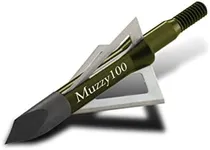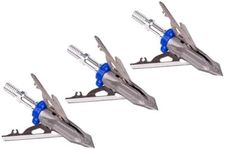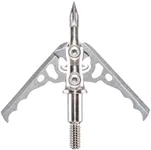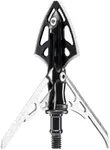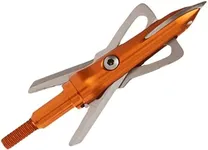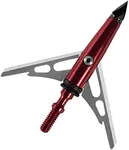Buying Guide for the Best broadheads
Choosing the right broadhead for your archery or hunting needs is crucial for ensuring accuracy, penetration, and overall effectiveness. Broadheads come in various designs and specifications, each suited for different types of game and shooting styles. Understanding the key specifications will help you make an informed decision that aligns with your specific requirements and preferences.Blade CountThe blade count refers to the number of blades on the broadhead. This is important because it affects the cutting diameter and the wound channel created. Broadheads typically come with 2, 3, or 4 blades. Two-blade broadheads are known for deeper penetration and are often used for larger game. Three-blade broadheads offer a balance between penetration and cutting diameter, making them versatile for various game sizes. Four-blade broadheads create larger wound channels, which can lead to quicker kills but may sacrifice some penetration. Choose the blade count based on the type of game you are hunting and your preference for penetration versus cutting diameter.
Cutting DiameterThe cutting diameter is the width of the cut that the broadhead makes upon impact. This spec is important because it influences the size of the wound and the likelihood of a quick, humane kill. Cutting diameters can range from about 1 inch to over 2 inches. Smaller cutting diameters (around 1 inch) are better for deeper penetration and are suitable for larger game with thicker hides. Larger cutting diameters (over 1.5 inches) create bigger wound channels, which can be more effective for smaller game or when a quick kill is essential. Consider the type of game and the desired balance between penetration and wound size when choosing the cutting diameter.
Fixed vs. MechanicalBroadheads come in two main types: fixed-blade and mechanical (expandable). Fixed-blade broadheads have blades that are permanently fixed in place, offering reliability and durability. They are less likely to fail upon impact and are ideal for larger game and tougher conditions. Mechanical broadheads have blades that expand upon impact, providing a larger cutting diameter and potentially more damage. They are often preferred for their accuracy and larger wound channels but may be less reliable in certain conditions. Choose fixed-blade broadheads for reliability and mechanical broadheads for larger wound channels and potentially better accuracy.
WeightThe weight of the broadhead, usually measured in grains, affects the arrow's flight and penetration. Common weights range from 75 to 150 grains. Lighter broadheads (75-100 grains) are faster and can be more accurate at longer distances, making them suitable for smaller game and target shooting. Heavier broadheads (125-150 grains) provide better penetration and are ideal for larger game. Consider the type of game, your bow's draw weight, and your shooting distance when selecting the weight of the broadhead.
MaterialBroadheads are made from various materials, including stainless steel, carbon steel, and aluminum. The material affects the durability, sharpness, and overall performance of the broadhead. Stainless steel broadheads are highly durable and resistant to corrosion, making them a good choice for all-weather hunting. Carbon steel broadheads are extremely sharp and offer excellent penetration but may require more maintenance to prevent rust. Aluminum broadheads are lightweight and can be very accurate but may not be as durable as steel options. Choose the material based on your hunting conditions and the level of maintenance you are willing to perform.
